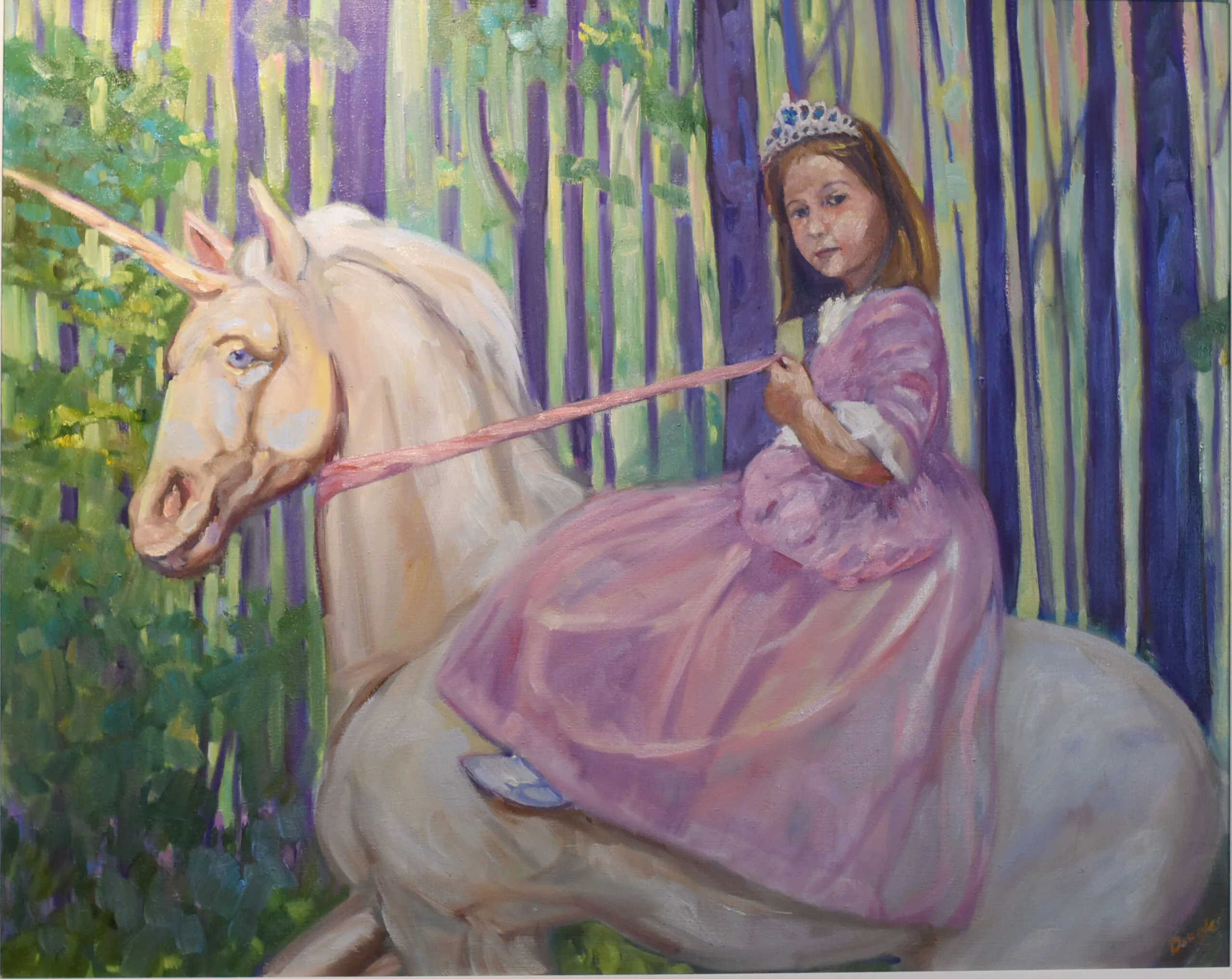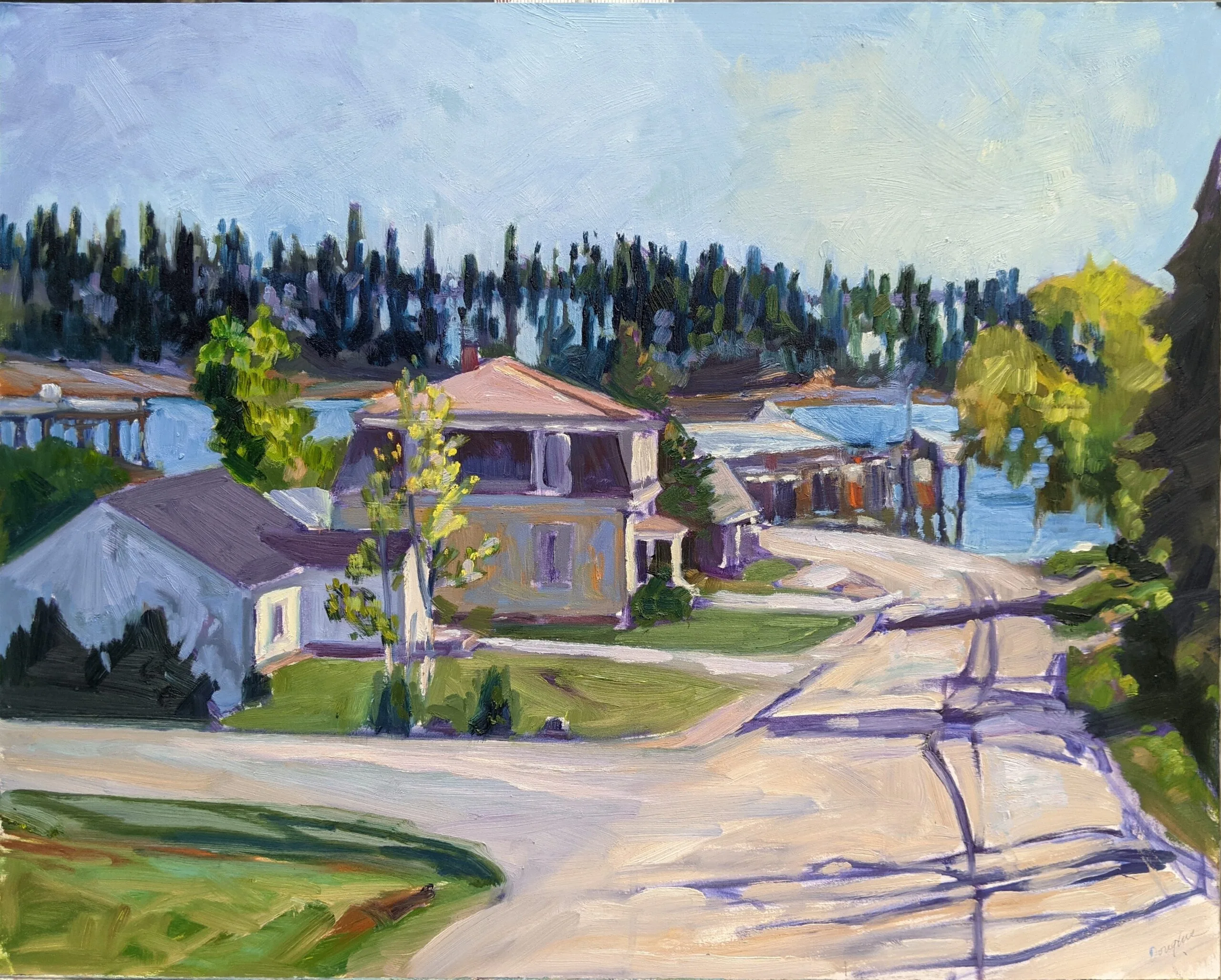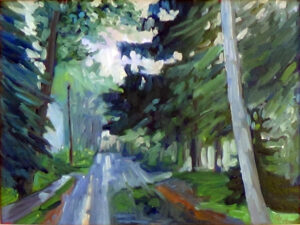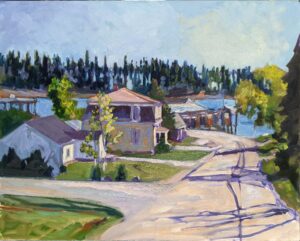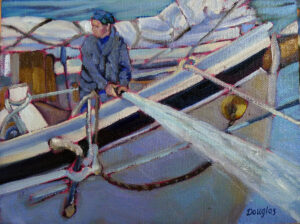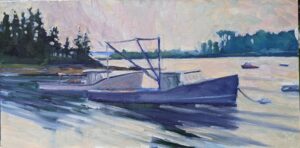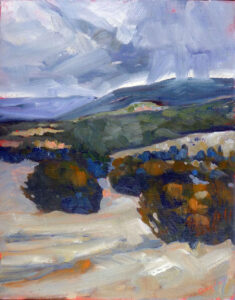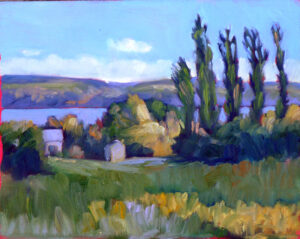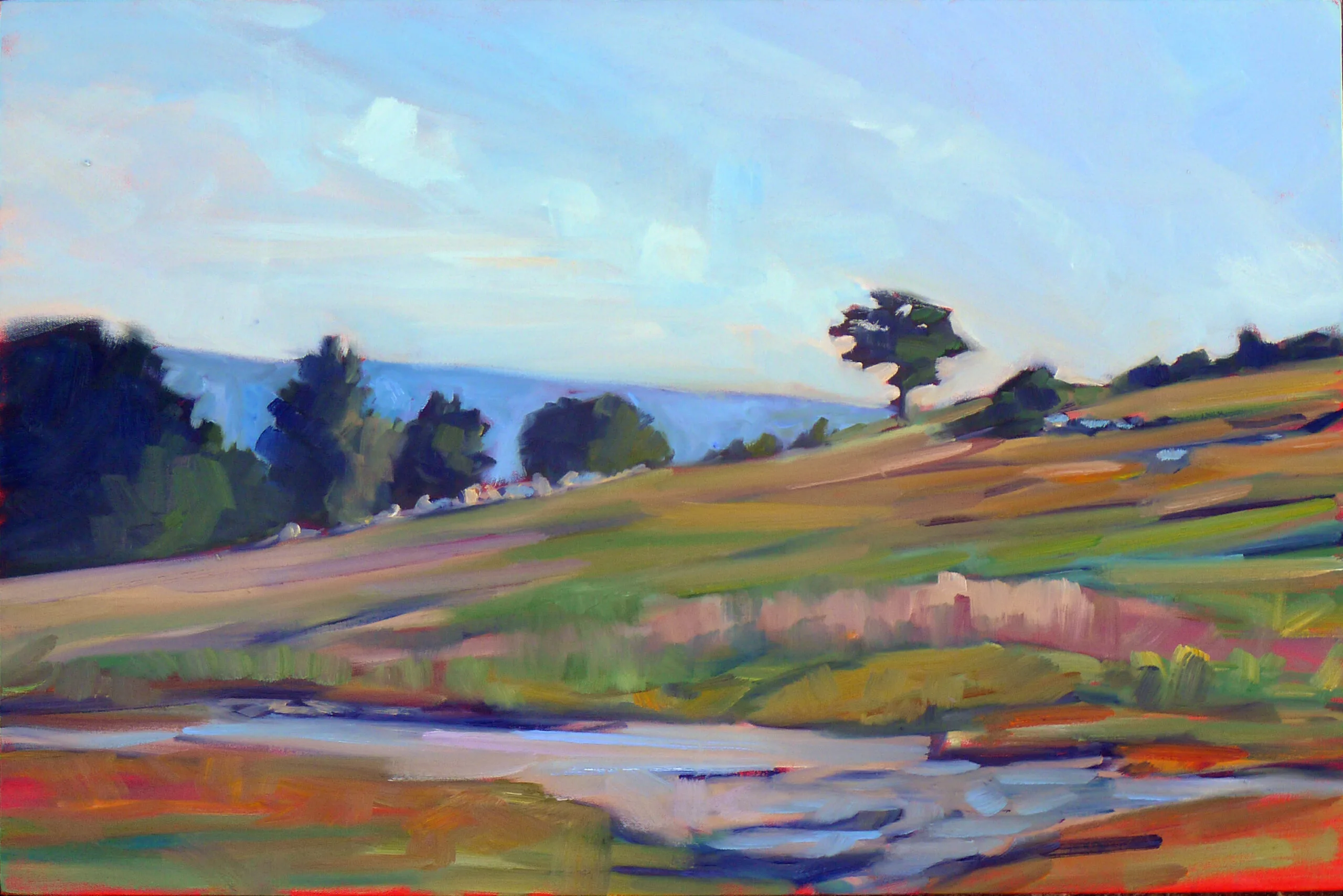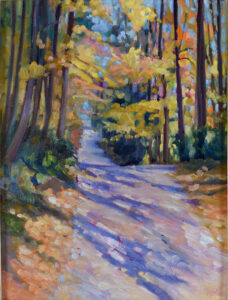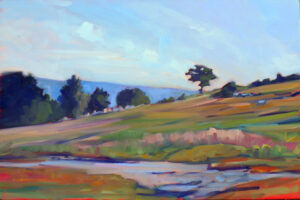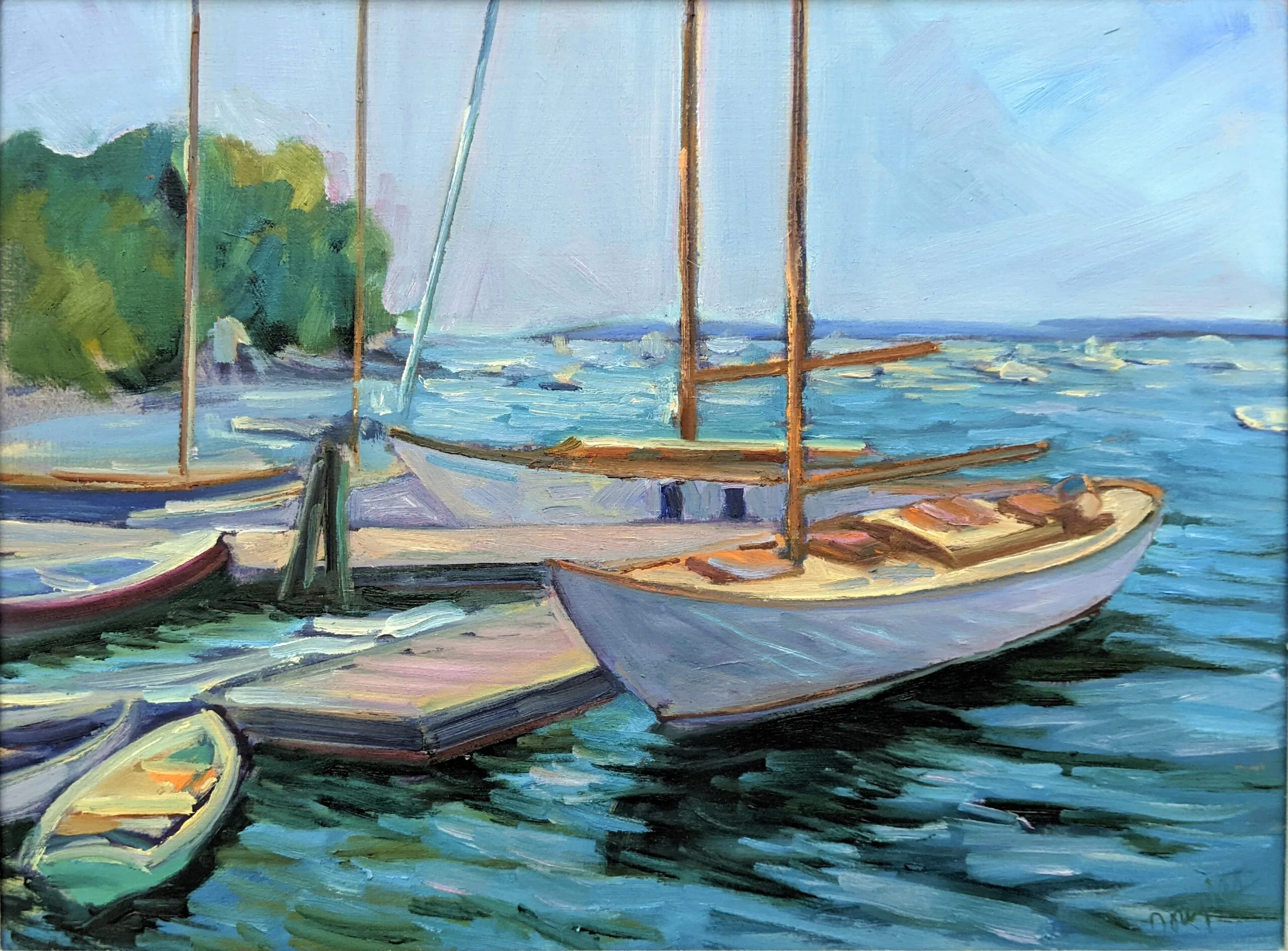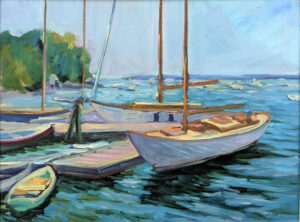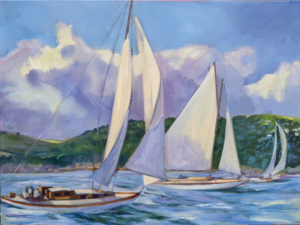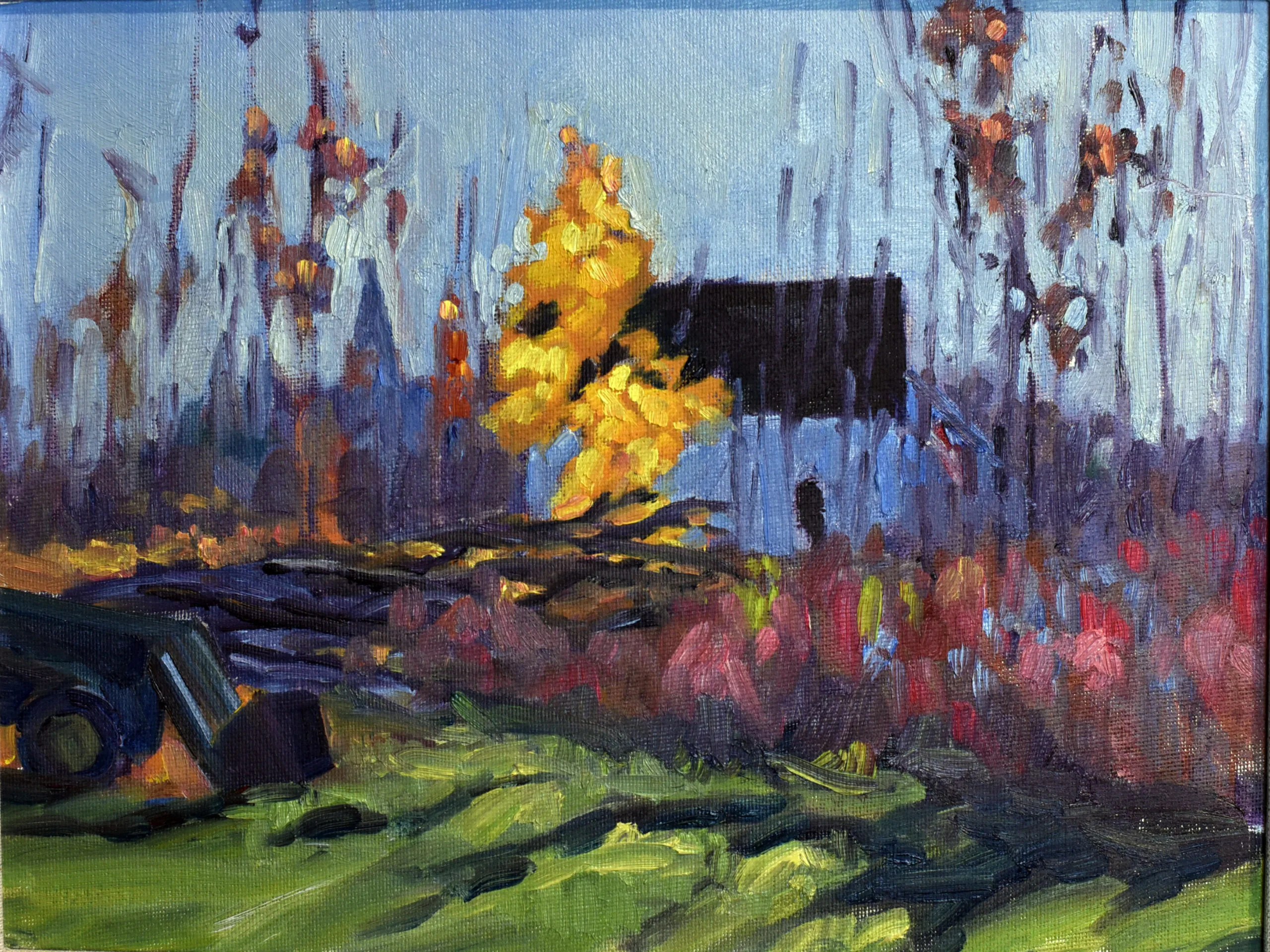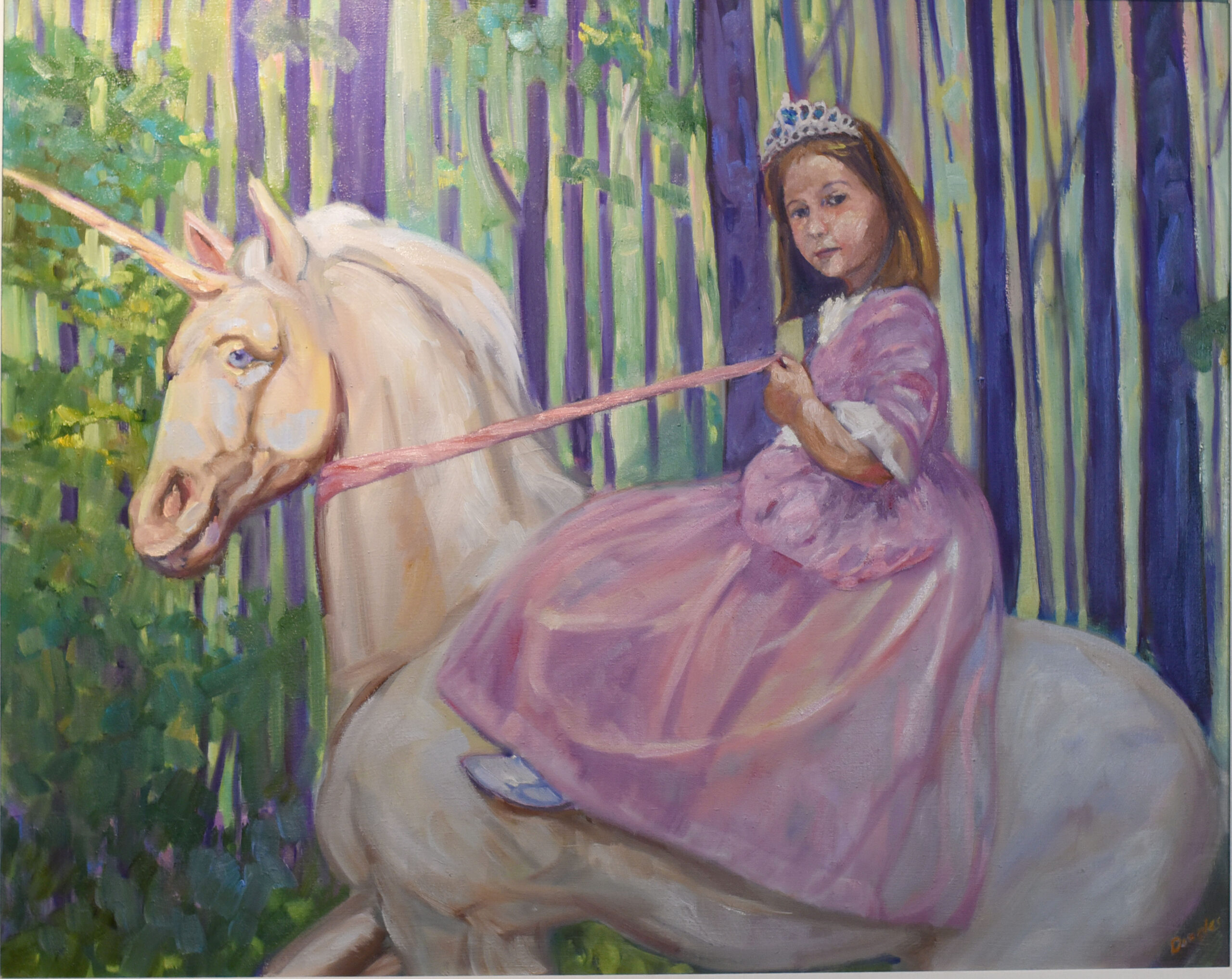
A student told me that he knocked a painting off a high shelf onto another one that he’d just sold, putting a wicked gash in the blue sky.
“Can you pass it off as a contrail?” I asked.
No such luck. He’ll have to repair it, which means matching the blue, which raises the possibility of not quite hitting the color and having to repaint the whole sky. This is opening Pandora’s box, because once the brush is in your hand, it’s too easy to end up repainting the whole darn picture.
“Oh, well,” he told me, and quoted me back to myself: “If you can paint it once, you can paint it 1000 times.”
That isn’t exactly what I meant, of course.
Sometimes students see something breathtakingly wonderful in their work. “I did that?” they marvel, and protect that passage at all costs. That’s great, unless it’s in the wrong place, or it’s the wrong color. It’s good to remember that this passage wasn’t a happy accident. It came from their competence and experience. If it’s not strengthening the painting, they need the courage to wipe it out.

What is the dumbest thing you’ve ever done?
One time I sold a painting online that I couldn’t find. In retrospect, I should have confessed all to my collector and refunded her money, but I didn’t want to disappoint.
That meant I had to forge a copy of my own work. Sounds easy, right? It was anything but—I worked harder on that small painting than I’ve done on any other. I blew the image up on my studio monitor, and laboriously, painstakingly matched it, brush stroke to brush stroke, color to color.
All I can say is, forgers earn their money.
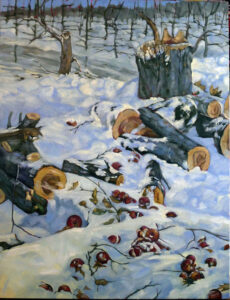
The customer is always right doesn’t mean you can always make everyone happy
Until recently, American consumers could get anything we wanted at any time. Then in 2020 we started to see longer and longer wait times for retail goods.
Those wait times are not obvious when you’re ordering from a big-box store. You flash your credit card and your garage doors appear magically 11 months later, just when you’ve forgotten you ever ordered them. Mass marketing creates an illusion of efficiency. These stores have powerful websites, but they’re subject to the same shortages.
If you’re trying to source locally, the labor shortage is obvious from the very beginning. Contractors don’t even have the time to come by and quote jobs, let alone do them.
They, like us, are human beings, not cogs in a huge wheel. My kitchen is being renovated by David Ernst. Yesterday he took a few hours out of his already-overloaded schedule to chase down my countertop suppliers. Knowing why they’re slow doesn’t solve my problem, but it helps me to be patient.

Perfect is the enemy of good
Our retail expectations were formed in pre-2020 culture—we believe that purchases should be delivered promptly and cheaply, and they should be perfect. These are great goals but they have never been possible in a one-man, artisan operation. Stuff gets dinged and nicked, paintings get lost, and we sometimes don’t get them shipped on time or packaged properly.
Paintings are not garage doors, built in a factory on a jig and knocked out one after another. Paintings are the individual work of a person’s hands. They won’t always be perfect, and that’s part of their charm. Focusing on mistakes prevents us from seeing that, overall, we’re doing a great job.

